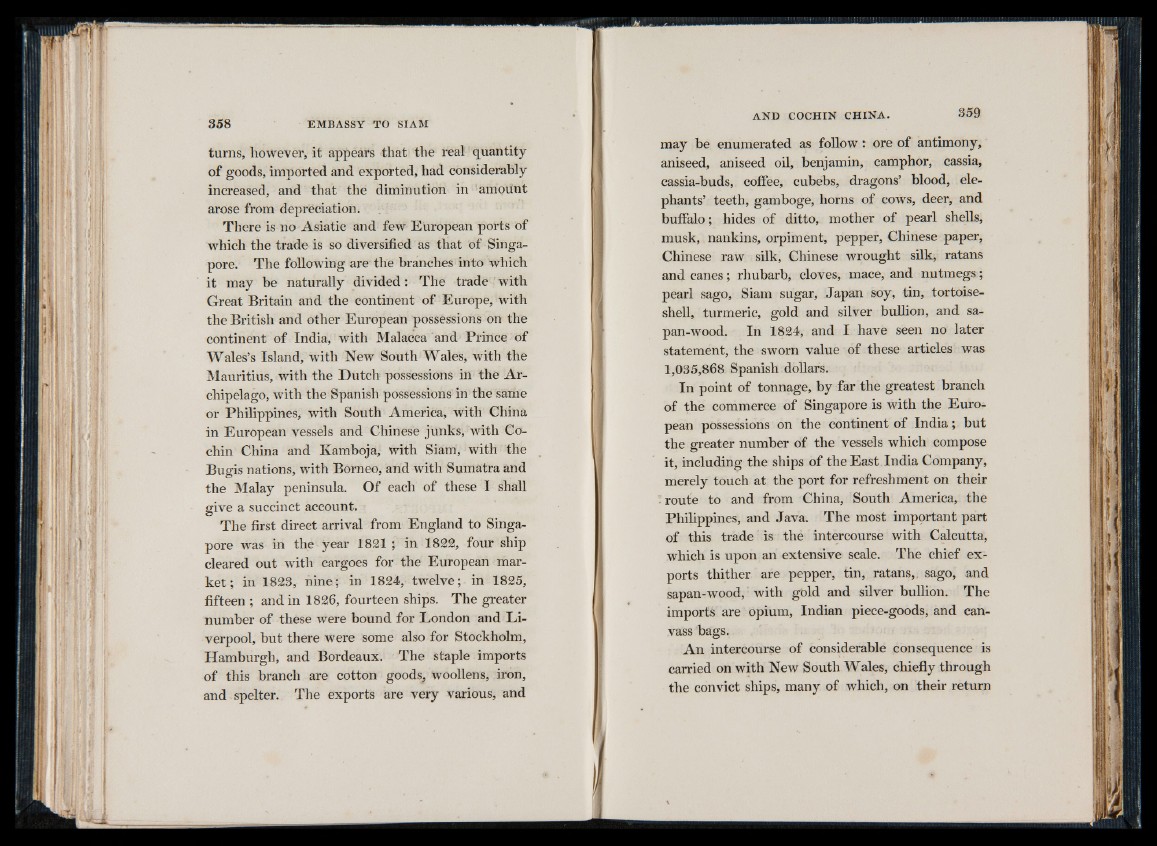
turns, however, it appears that the real quantity
of goods, imported and exported, had considerably
increased, and that the diminution in amount
arose from depreciation.
There is no Asiatic and few European ports of
which the trade is so diversified as that of Singapore.
The following are the branches into which
it may be naturally divided : The trade with
Great Britain and the continent of Europe, with
the British and other European possessions on the
continent of India, with Malacca and Prince of
Wales’s Island, with New South Wales, with the
Mauritius, with the Dutch possessions in the Archipelago,
with the Spanish possessions in the same
or Philippines, with South America, with China
in European vessels and Chinese junks, with Cochin
China and Kamboja, with Siam, with the
Bugis nations, with Borneo, and with Sumatra and
the Malay peninsula. Of each of these I shall
give a succinct account.
The first direct arrival from England to Singapore
was in the year 1821 ; in 1822, four ship
cleared out with cargoes for the European market
; in 1823, nine; in 1824, twelve; in 1825,
fifteen ; and in 1826, fourteen ships. The greater
number of these were bound for London and Liverpool,
but there were some also for Stockholm,
Hamburgh, and Bordeaux. The staple imports
of this branch are cotton goods, woollens, iron,
and spelter. The exports are very various, and
may be enumerated as follow r ore of antimony,
aniseed, aniseed oil, benjamin, camphor, cassia,
cassia-buds, coffee, cubebs, dragons’ blood, elephants’
teeth, gamboge, horns of cows, deer, and
buffalo; hides of ditto, mother of pearl shells,
musk, nankins, orpiment, pepper, Chinese paper,
Chinese raw silk, Chinese wrought silk, ratans
and canes; rhubarb, cloves, mace, and nutmegs;
pearl sago, Siam sugar, Japan soy, tin, tortoiseshell,
turmeric, gold and silver bullion, and sa-
pan-wood. In 1824, and I have seen no later
statement, the sworn value of these articles was
1,035,868 Spanish dollars.
In point of tonnage, by far the greatest branch
of the commerce of Singapore is with the European
possessions on the continent of In d ia ; but
the greater number of the vessels which compose
it, including the ships of the East India Company,
merely touch at the port for refreshment on their
• route to and from China, South America, the
Philippines, and Java. The most important part
of this trade is the intercourse with Calcutta,
which is upon an extensive scale. The chief exports
thither are pepper, tin, ratans,, sago, and
sapan-wood, with gold and silver bullion. The
imports are opium, Indian piece-goods, and canvass
bags.
An intercourse of considerable consequence is
carried on with New South Wales, chiefly through
the convict ships, many of which, on their return